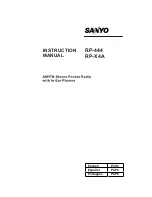
0406-900-702 Rev-E
EN
www.stryker.com
9
System Overview
(see figure 1)
The generator applies temperature-controlled, radio frequency (RF) energy
to targeted nerve tissue using an active electrode. The generator is capable
of supplying RF energy to a maximum of four electrodes concurrently using
a timed-delivery method. Using monopolar electrode(s), parallel bipolar
electrode(s), or NiTRODE
TM
coaxial bipolar electrode(s), the application of
RF energy causes a thermal reaction in the body to create a lesion at the
targeted site. The generator monitors impedance of the targeted site during
lesion creation. Lesion creation inhibits the nerve tissue’s ability to conduct
electrical signals. Pain relief is achieved when these transmitted electrical
signals are interrupted.
Key user interface features include the display, software, and remote
operation.
The display, with its color, touch-sensitive screen, provides an intuitive
graphical user interface that allows the operator to select settings and enter
data.
The software has a modular structure that includes sensory stimulation,
motor stimulation, lesion creation, and a procedure summary. To enhance
usability and promote safety, these screens are color-coded. The system
settings screens include registration, display, sound, date and time,
language, and procedure defaults. These screens allow the operator to
modify such settings as display brightness and speaker volume for audio
output. The file/folder management screens allow the operator to create
and modify folders and files that contain preferred procedures and settings.
Up to 25 files may be stored electronically to improve efficiency. Patient
information displayed on a procedure summary screen may be saved to a
file or printed.
A RF Hand Controller may also be used to provide basic remote operation
of the generator. See
Appendix A - RF Hand Controller Instructions
section.
RF MultiGen
Control Circuitry
Printer
Interface
RF Amp, Stim
Pulse Generator
Speaker
Touch
Sensitive
Screen
Monopolar/
Bipolar
Electrode(s)
Bipolar
Electrode(s)
Ground
Pad
(monopolar)
Color
Display
Printer
100-120 VAC, 50-60 Hz
230 VAC, 50 Hz
Facility Power
Finger/Stylus
Input
Graphical/
Audio Output
Hand
Controller Input
Service Use
Only
RS-232 Data
Port
Monopolar/
Figure 1 Block Diagram
NiTRODE is a trademark of the Stryker Corporation.
Procedural Overview
The patient’s pain is localized using various diagnostic techniques. An
assessment is made that RF treatment of the affected nerve tissue will
improve the patient’s symptoms. Reusable system components that will
contact the sterile field are sterilized in advance of the procedure. The
patient is positioned on a fluoroscopic imaging table and the surgical
site is prepped using standard techniques. The system is turned on, and
accessories are connected to the generator. To start a procedure, either a
saved file is selected, or the system default settings are used. The desired
cannula is placed in the target tissue region under fluoroscopic guidance.
After the cannula has been placed in the general location, the electrode is
inserted into the cannula.
Sensory stimulation and motor stimulation are used to facilitate the proper
placement of the electrode/cannula before lesion creation. Targeting
information is provided by monitoring tissue impedance and providing low
frequency stimulating signals to obtain additional information. Sensory
stimulation controls are used to control the nerve stimulator output and
help position the active tip of the electrode/cannula next to the target
nerve tissue. Motor stimulation controls are used to help the clinician rule
out proximity of the electrode/cannula active tip to motor nerves. During
this stimulation, impedance is displayed to assist the clinician in the proper
placement of the electrode/cannula active tip.
The RF energy output (THERMAL/PULSE) screen is used to control
the RF energy output to an active electrode tip. During output, targeted
nerve tissue is exposed to RF energy. A temperature sensor built into the
electrode tip measures the temperature in the surrounding tissue. The
generator monitors temperature and adjusts RF energy based on the
temperature readings. The generator monitors and displays various key
parameters in real time continuously to help maximize safety and operating
efficiency during all phases of the procedure. Temperature and impedance
values are updated continuously and displayed on the generator screen.
When the active electrode tip temperature reaches the set temperature
value, the RF power output is reduced to prevent significant overshoot.
When a procedure is complete, the key parameter information used during
the procedure may be viewed on a summary screen and printed.
A SET TEMPerature value and HOLD TIME (TIME) value are selected
by the clinician. The set temperature value is not exceeded during either
thermal or pulse modes.
In thermal mode, RF energy output is monitored and controlled by a hold
time/set temperature feedback mechanism. An optimal temperature-rise
rate is achieved and the desired set temperature value is maintained. The
TIME value displayed begins to count down when the temperature value of
the active electrode tip is within 2 degrees of the set temperature value. RF
energy output is removed when the TIME value reaches zero. RF energy
output may be removed at any time if the rate of temperature rise, the
impedance, or the temperature value of the active electrode tip indicates a
safety concern.
In pulse mode, the amplitude (voltage) of the RF energy pulses will be
adjusted automatically to achieve the set temperature value of the active
electrode tip while maintaining the set frequency and width. The TIME value
begins to count down when the START button is touched and confirmed.
When the TIME value reaches zero, the RF energy output is removed.
The pulse mode creates a significant electrical field to interact with the
target nerve. This interaction is usually at a temperature value lower than
the temperature necessary to cause cellular necrosis. Temperature rise is
a by-product of the clinical application of RF energy. Therefore, the time
required to reach the set temperature value during the pulse mode may be
longer than during the thermal mode.
Содержание RF MultiGen 0406-900-000
Страница 3: ......











































